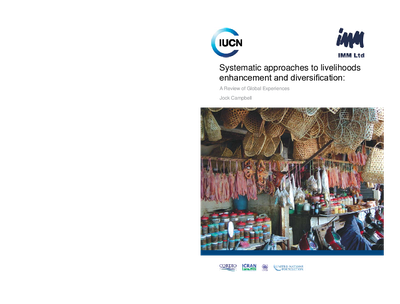Systematic Approaches to Livelihoods Enhancement and Diversification: A Review of Global Experiences

Key points in document
- This review summarizes lessons from two regional coral reef projects developed using the Sustainable Livelihood Enhancement and Diversification (SLED) approach.
- SLED is a systematic approach to improving and diversifying the livelihoods of people facing major external change, including resource over-exploitation and other pressures (see Cattermoul, Townsley, and Campbell, 2008).
- The review examines 14 case studies across four broad study areas: (1) rural community development support; (2) livelihood change and aquatic-resource-dependent communities; (3) entrepreneurship and enterprise development; and (4) corporate staff development and enterprise growth.
- Within each study area the review addresses “how to understand and respond successfully to the need for livelihood change.”
- The review categorizes enabling conditions according to the three phases of the SLED process: “Discovery, Direction, and Doing.” The first two phases emphasize the importance of understanding the constraints and opportunities that affect behavior change.
- A common theme underscoring enterprise success is alignment between the livelihood project and the needs and aspirations of participants as a means for establishing participant buy-in for behavior change.
- Lessons learned in the Doing phase recognize the importance of enabling conditions related to business aspects of the enterprise, supportive leadership and partnership, and building skills and capacity.
Information relevant to Learning Questions:
Are enabling conditions in place to support a sustainable enterprise?
- Stakeholder alignment, diversification
- Market demand, access to credit/capital
- Ownership
- Policies for enterprises, business alliances
- Technical capacity
- Targeted participants, policies for and enforcement of resource use
Does the enterprise lead to benefits to stakeholders?
- Increased income for participants
- Non-cash benefits
Do the benefits lead to positive changes in attitudes and behavior?
- Attitudes regarding sustainable use of resources
- Behaviors regarding sustainable use of resources
Does a change in stakeholders’ behaviors lead to a reduction to threats to biodiversity (or restoration)?
- Residential and commercial development
- Agriculture and aquaculture
- Biological resource use
- Human intrusions and disturbance
- Natural system modifications
- Pollution
- Climate change and severe weather
Does a reduction in threats (or restoration) lead to conservation?
- Marine ecosystems
- Species

